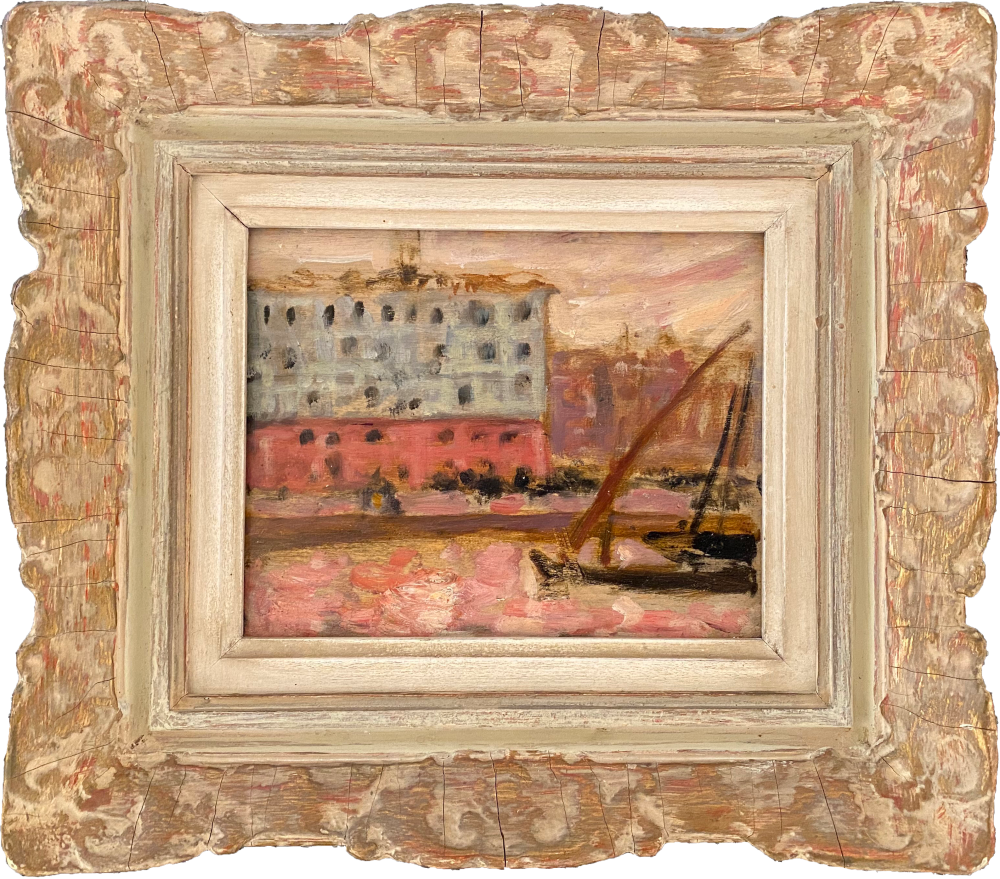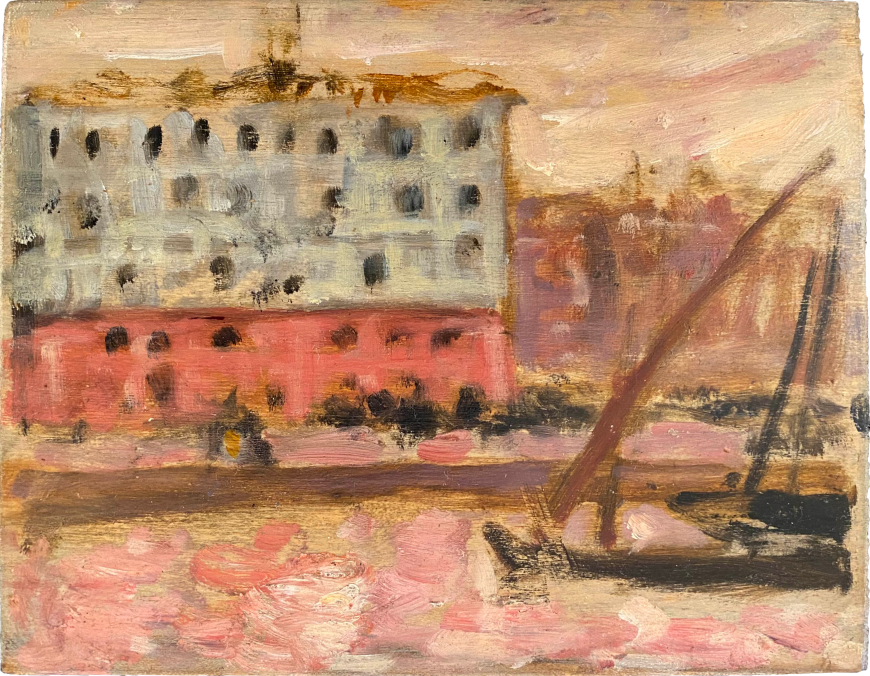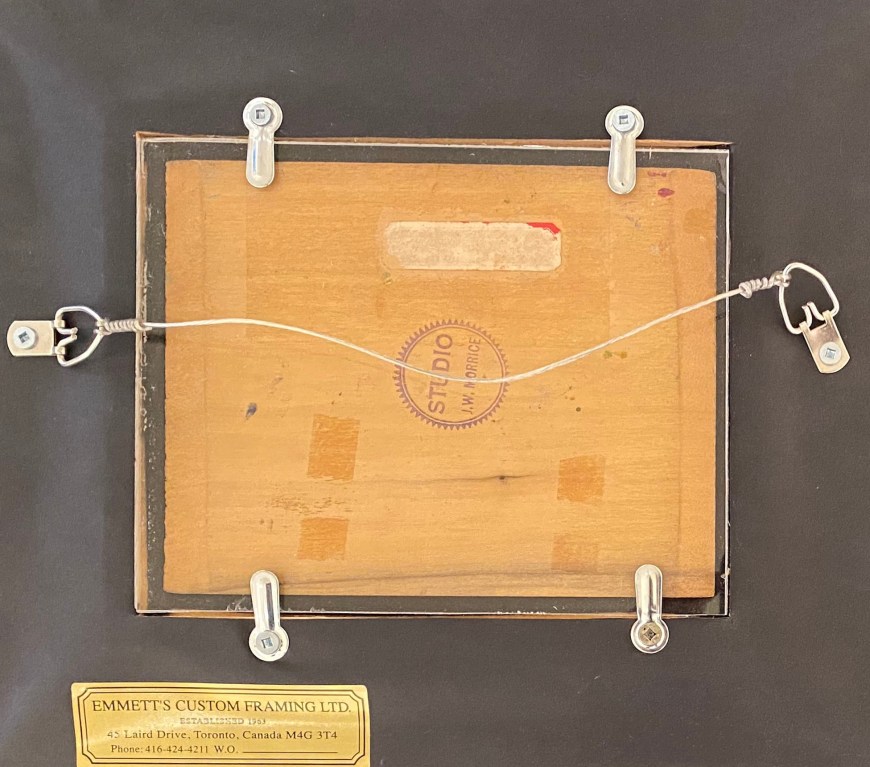-
Artworks
James Wilson MorriceA Canal at Sunset, Marseilles, 1904 (circa Summer)1865-1924Oil on panel4 7/8 x 6 in
12.3 x 15.4 cmSoldInscriptions
studio stamp, 'STUDIO J.W. MORRICE' (verso, middle)Provenance
Estate of the artist, as A Venetian Scene at Sunset;
David R. Morrice, the artist’s nephew;
Private collection, Montreal, gift from the above;
By descent to the present owners.
Sunset on a small canal, delicious pinks and creams... an impressive palace-looking building, a small boat quietly passing by; on the opposite quay, small silhouettes rushing home before nightfall. We think Venice at the “Golden Hour”, a subject particularly close to Morrice’s heart, especially during the summers of 1901, 1902 and 1904. The palette and technique of our sketch dates it from 1904, but is it really Venice? The little boat is not a gondola, but a tartane, a type of fishing boat found all around the Mediterranean – the long diagonal pole supported the main sail; the quay is too wide, and the wide space opened at the right is not found in Venice, and neither is this building.
The 1904 trip is documented by a few letters and by Sketchbook #18 (Montreal Museum of Fine Arts). On July 9, from Avignon, Morrice wrote to his friend Joseph Pennell, “I shall stay a few more days & then go to Martigues and afterwards to Venice.” (Washington, Library of Congress). Two pages near the front of the sketchbook were drawn in Avignon, and more than twenty at the end in Venice; but none in Martigues (of which no sketch was ever discovered). Instead, we find many views of Marseille: we follow the artist around the Vieux Port, and sit with him at a few cafés along the Canebière, the city’s most famous avenue. He even ventured further to the Arènes du Prado, where he made a very detailed drawing of a bull fight; but no drawing of the view in our sketch. Venice being eliminated and Avignon having no canal, we looked more carefully at Marseille... and found the Canal de la Douane (Customs Canal).
Located at the south-east corner of the Vieux Port, it had replaced the old Canal de l’Arsenal in 1782, after the decline of the galley-building activities; shaped as a “U”, it ringed a new district of strong stone warehouses. But after 1840 the harbour activities were moved west, and the old harbour area slowly declined: if the 1902 guidebooks quickly mention the Vieux Port before sending the tourist to the new one, they don’t even mention its small canal annex. But Morrice found it, perhaps by chance, en flânant during an early evening leisure walk. The artist immediately saw how the colors of the building – white and dark red, if we believe old colorized postcards – were totally in tune with the pinkish sky and water. With very few colours, he transformed a corner of an old, dirty (and probably smelly) canal, which had become the repository for old tartanes, into a source of beauty, a fitting prelude to his Venetian sojourn.
(The canal was filled in 1927; its south branch was disfigured by a three-level outdoor parking in the sixties, its circular ramp located at the exact spot that Morrice painted. The eighties saw its demolition and move underground, while the outdoor space was transformed into the trendy Cours d’Honoré Estienne d’Orves, a magnet for Marseillais and tourists alike).
Lucie Dorais for Alan Klinkhoff Gallery
All Rights Reserved.











